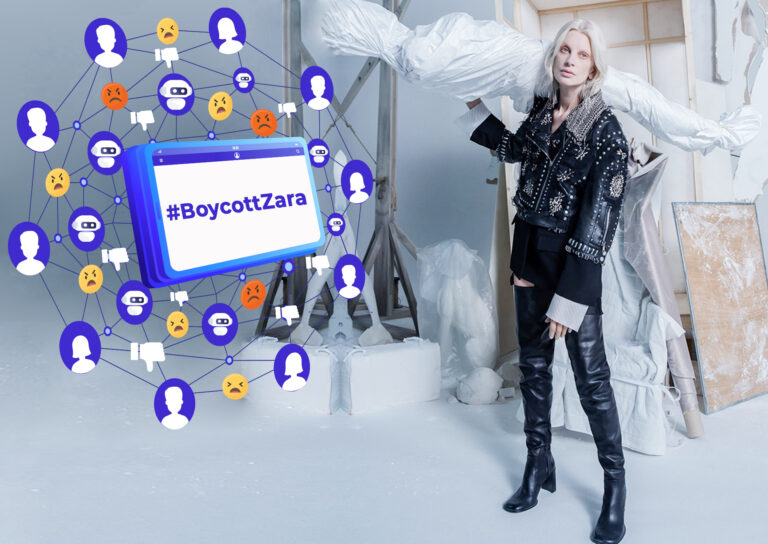Disinformation is a term that has been frequently used in recent times due to the widespread nature of it. The effects of disinformation are far-reaching, but it is not a new phenomenon.
The long history of disinformation predates modern technology and has been widely used by political figures and governments since ancient times, helping them achieve their goals through manipulation.
In modern times, the spread of disinformation is an ever-growing problem that has become rampant due to the ease of disseminating it on social media, making it very easy for individuals to fabricate a story and see it go viral, leading to harmful effects on the public.
Historical Roots of Disinformation

In order to see one of the first examples of disinformation, we need to go back – way back.
Around 2000 years ago in Ancient Rome, during the end of the Roman Republic, an alliance, known as the Second Triumvirate, was crumbling down.
This alliance was originally formed between Octavian, the heir of Julius Caesar, and his right-hand man Marcus Antonius, to consolidate their power and defeat their mutual enemies following the assassination of Julius Cesar.
Over time, both men had plans to become sole rulers of the Roman Empire, with Antonius controlling the Eastern Roman Empire while living in Egypt with Cleopatra (The Queen of Egypt at the time), and Octavian in Rome, influencing the Senate and the public opinion.
Octavian claimed to have obtained Antonius’ will (there’s still debate among historians if the will was real or forged) which contained inflammatory accusations against Antonius, including plans to leave Roman territories to his children with Cleopatra.
He read the will aloud in the Senate and completely shifted the public’s perception on Antonius, ultimately costing him his power and his life, as both him and Cleopatra committed suicides, leaving Octavian as Rome’s sole ruler.
This illustrates how disinformation can prey on people’s emotions and prejudices. Octavian masterfully manipulated the Roman public by framing Antonius as a lovestruck man who was “under the spell” of Cleopatra.
It tapped into existing Roman biases against the wealth and perceived decadence of the East, as well as suspicions about powerful women.
Disinformation in the 20th Century and Beyond

Many political figures took notes from Octavian, utilizing every dirty tactic in the book in order to consolidate power and achieve their plans at the expense of everyone in their way.
One such figure was a man by the name of Adolf Hitler, who had just been sworn in as the chancellor of Germany in 1933 and was looking for ways to establish his totalitarian regime.
On February 27, 1933, the Reichstag building, home of the German parliament in Berlin, was set on fire. Nazis claimed a young Dutch communist was the perpetrator, as he was arrested at the scene of the crime.
The Nazi government, led by Hitler, used this as a pretext to claim that Communists were plotting against the German government and issued the Reichstag Fire Decree which suspended civil liberties, initiating an aggressive crackdown on Communists and marking the first step in the creation of Nazi Germany.
Even though the 24 year old communist confessed to the crime and was executed for it, many historians and scholars believe that the Nazis themselves orchestrated the fire as a false flag operation to justify their actions and further their agenda.
The Nazis continued to wield disinformation like a weapon during World War II, most notably against Jewish people. Under the orchestration of Joseph Goebbels, the Nazi propaganda machine painted Jews as subhuman and dangerous enemies of the state.
Films like “The Eternal Jew,” pushed by Goebbels himself, depicted Jews as cultural parasites and threats to Aryan society, leading to complete brainwashing of the German population during the reign of the Nazi regime.
Fast-forward 70 years, and another great power used disinformation tactics to sway the public’s opinion.
In February of 2003, U.S. Secretary of State Colin Powell testified before the United Nations Security Council, presenting evidence that Iraq possessed weapons of mass destruction (often abbreviated as WMD).
The Bush administration said this was an imminent threat to the American public, and used fear mongering tactics to gain support for the invasion of Iraq, which claimed the lives of hundreds of thousands of people since 2003.
Subsequent investigations into this matter revealed that no WMDs were found, and the intelligence used to justify the war was highly questionable and possibly manipulated.
The New Age of Disinformation
In 2024, the tools of disinformation have evolved with the invention of the internet, but the core idea of deceiving the public in order to further an agenda remains largely unchanged.
The rise of social media has made spreading disinformation a cakewalk for threat actors. These individuals are utilizing all weapons in their arsenal in order to wreak havoc and contribute to a more toxic and harmful environment – both online and in real life.
One of the tools malicious actors use are fake accounts working in a coordinated effort to appear as a large collective of people with the same ideas and goals. These bot accounts are able to create or latch on to controversial topics and influence the public’s opinion on a global scale.
Pair that up with the fact that social media algorithms prioritize content that spurs negative emotions like anger and outrage, and you’ve got a recipe for disaster.
Additionally, the rise of GenAI technology has added another layer of intricacy to this already complicated issue. Textual GenAI models like GPT and Gemini and image generation tools such as Midjourney and StableDiffusion have made this technology highly accessible to everyone, including people with bad intentions.
GenAI software allows users to create human-like articles, posts, and realistic images in a matter of seconds, without requiring any particular skills other than basic prompt-writing, which made malicious actors jump at the opportunity to exploit it and cause disruption and chaos.
Mitigating Damage
Disinformation spreads much faster on social media compared to traditional media outlets such as television and radio.
This is due to the fact that mainstream news outlets have robust safeguards in place to prevent and correct false claims, while social media websites’ algorithms encourage viral content with low oversight.
Using Cyabra’s services, similar safeguards can be applied to social media, identifying and mitigating disinformation campaigns in real-time, helping to ensure the integrity of information and protect public discourse from manipulation.


